How to Proof Pizza Dough

Whether you're new to pizza-making or looking to improve your skills, this article will teach you all you need to know to proof your pizza dough to perfection.
What is Pizza Dough Proofing?
Proofing is a stage in the pizza-making process in which the dough is left to rise after being cut and molded into dough balls. This allows the yeast to ferment, which improves the flavor and texture.
This proof is required for pizza dough to be filled with microscopic bubbles of carbon dioxide. When cooked, this creates empty pockets, giving the dough a light, airy quality.

What is the difference between rising and fermentation?
Rising (also known as bulk fermentation or first rise) refers to the initial leave, when the dough rises as one mass while lying in a bowl. This happens before you cut the dough (from the bulk) and shape it into dough-balls.
Fermentation is essentially a chemical process in which enzymes break down carbohydrates (sugar) into CO2.
5 Simple Steps for Proofing Pizza Dough
Proofing pizza dough is a two-step process that begins with bulk fermentation (rising) and ends with proofing each individual pizza dough ball. Of course, you must still make the dough, knead it, and shape it into dough balls. So let's get started!
1. Prepare the Dough
The first step in making pizza dough is, well, making the dough. We recommend using our basic pizza dough. This recipe will yield an excellent pizza crust that is light and soft on the inside and crispy on the exterior.

2. Dough Kneading
Kneading the dough is one of the most critical yet frequently forgotten steps. Many people make the mistake of not kneading their dough enough, which leads to problems later on when you start rising the dough.
When you knead the pizza dough, the gluten in the flour forms a network of little barriers. These walls will capture CO2 produced by the fermentation process, in which yeast consumes the sugars in the flour.
It is consequently critical to appropriately grow gluten in order to generate strong enough walls to contain the CO2. This is accomplished by kneading the dough.
The stronger the gluten walls become as you knead the dough. The stronger the walls, the better the dough will retain its structure and shape.
If you don't knead the dough enough, it won't be able to retain the CO2. The reason for this is that the walls are insufficiently sturdy, and the CO2 will escape. You will then have a dense dough that is difficult to deal with. You won't also achieve the light, fluffy consistency that we want in a pizza crust.
3. Fermentation in Bulk
In this phase, you allow the dough to rise as a single mass. The majority of the volume increase will occur during bulk fermentation. The rationale for this is because yeast works better in a single, larger dough ball than in numerous, smaller dough balls.
Simply set your dough in an airtight jar or a bowl covered with plastic wrap to bulk ferment. You want it to be airtight to keep the dough's surface from drying out. Depending on the type of dough, bulk fermentation might last anywhere from 2 to 24 hours.
4. Balling
Simply divide the dough into individual dough balls, one for each pizza.
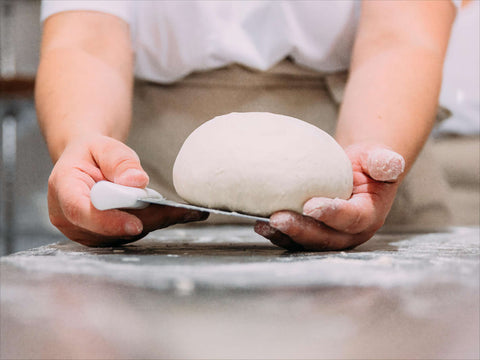
5. Final Checking
The dough balls must then be proofed. This is frequently the most time-consuming phase in the procedure. The final proofing can be done at room temperature or at a lower temperature to slow it down. Pizza dough should be proofed at room temperature for 1 to 24 hours, or even longer. A pizza dough might take anything from 24 to 72 hours to cold-proof.
What temperature and how long should it be?
There are two methods for proving your pizza dough, and the ideal one depends on how much time you have. Do you need a quick dough for a supper in a few hours, or are you willing to plan ahead and spend a little more time to make a nicer dough?
Fermentation occurs more quickly at higher temperatures. More CO2 will be released at a faster pace, but the flavor will take longer to develop and the dough will relax. The gluten network requires more time and cannot be ramped up as easily as yeast can.
You will need time to establish the flavor. However, warming the dough and leaving it for an extended period of time will lead it to overproof. It will become floppy and acidic in flavor. As a result, you must manage this by lowering the temperature, as lower temperatures decrease fermentation.
With that in mind, you can either do a faster rise at a warmer temperature but end up with a pizza with less flavor and a denser texture. Or, in general, a slower rise at a colder temperature and a nicer pizza.
Because good things come to those who wait, cold proving your dough will yield the best results, but I understand that time is not always on your side.
Dough that proofs quickly
Because the dough need assistance to rise, make sure your recipe includes enough yeast and a pinch of sugar. Make sure your dough is left in a warm enough area for the yeast to work faster.
The more yeast is visible, and the extra sugar is some extra food for the yeast, ensuring that it is eating and producing gas as a result.
The ideal temperature is between 20 and 38 degrees Celsius. This is normally slightly over ambient temperature, so look for a warm location in your home. Warm and consistent environments can be found in the kitchen or boiler room.
Method:
Knead the dough until it is smooth and elastic.
Proof the dough for an hour in an airtight container.
Divide the dough into little balls.
Proof the balls for 1-2 hours on the work surface, covered with upturned bowls.
Bake and stretch
Outcomes:
Quick and simple
Apart from yeast, there is really little flavor.
chewy and dense
When stretched or rolled, it will snap back.
Cold-Resistant Dough
We can use less yeast and skip the sugar because we don't require as rapid fermentation, and we can avoid the taste of an extremely yeasty crust that you might associate with novice home baking.
The sugars in the flour are sufficient for the yeast to begin working, therefore no additional sugars are required. And fewer yeast does not imply smaller bubbles because it has more time to develop.
Cold temperatures do not kill yeast, but they do inhibit fermentation, so storing dough in an airtight container or plastic wrap in the fridge works nicely. Proofing for 24 hours is a decent starting point, although the flavor will develop over several days. It is best to wait around 2-3 days before it begins to deteriorate.
Method:
Knead the dough until it is smooth and elastic.
Proof the dough for an hour in an airtight container.
Place the whole thing in the refrigerator to bulk ferment overnight (24-48 hours is better)
Remove the required amount of dough. 250g for a 12′′ base
Form the dough into balls after degassing it.
Proof for 2 hours under an overturned bowl to allow it to return to room temperature.
Outcomes:
The flavor depth has improved.
Air bubbles all over for a lighter, crisper texture
Dough that has been relaxed for a larger rise and crust holes
It's easier to stretch out.
Why is it better to proof your dough for a longer period of time?
The ingredients in the dough ferment while the dough is proving. Yeast absorbs flour carbohydrates and generates alcohol and carbon dioxide. This gas fills the dough with bubbles and causes it to rise.
Fermentation also has two more effects on your dough. The fermentation byproducts give depth of flavor, and the lengthier rest improves the texture. This is due to the flexible gluten network formed during kneading relaxing over time. When baked, a more loosened dough will be able to rise more easily, making it crisper and full of huge holes.
The temperature increases yeast activity, causing it to produce more carbon dioxide and climb faster, so you may believe you are helping yourself. However, the flavor takes longer to develop!
While it may be tempting to try to speed up the dough process, it will not result in a pizza with a decent texture or taste.
How Can I Tell If My Pizza Dough Is Proofed?
There are two simple tests you may use to see if your dough is ready!
Increased Dough Volume
Most doughs double in volume when proofed, therefore if your dough hasn't doubled in volume yet, it probably needs to proof longer.
The Poke Examination
To check if the dough is adequately proofed and ready, lightly press it with our knuckle or finger. If the dough springs back immediately, it need more proving. However, if it returns slowly and leaves a slight indent, it is ready to become a great pizza!
What Happens if Pizza Dough Isn't Proofed?
If you don't proof the dough, you'll get a crust with little rise and few air pockets. However, some doughs are like this; consider flat bread and other unleavened breads that do not include yeast.
If you make the crust thick, the pizza will be fairly dense and chewy. As a result, we recommend rolling out the dough thinly and creating a cracker-style pizza base. Get it nice and thin before crisping it up.
 is here! Shop now, pay later in 4 easy installments
is here! Shop now, pay later in 4 easy installments


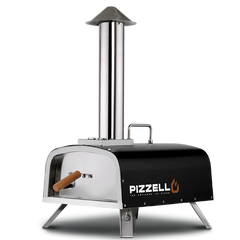
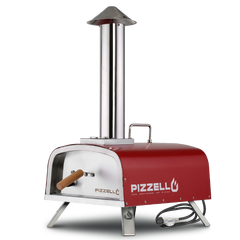
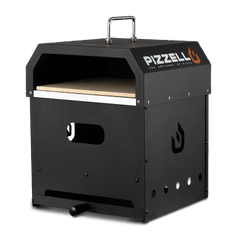
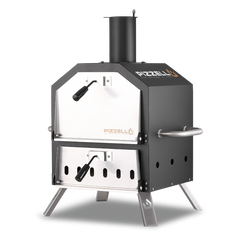





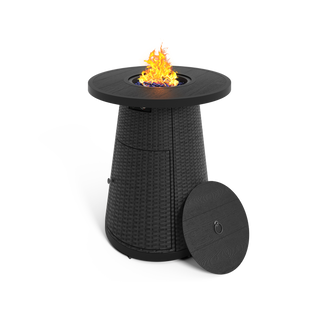

 Dining Table
Dining Table
 Cart
Cart
 Cart Pro
Cart Pro
 Pizza Stone
Pizza Stone
 Gas Burner
Gas Burner
 Pizza Oven Door
Pizza Oven Door
 Swivel Barstools
Swivel Barstools
 Dining Chairs
Dining Chairs
 Folding Chairs
Folding Chairs
 Wind Guard
Wind Guard
 Waterproof Cover
Waterproof Cover
















